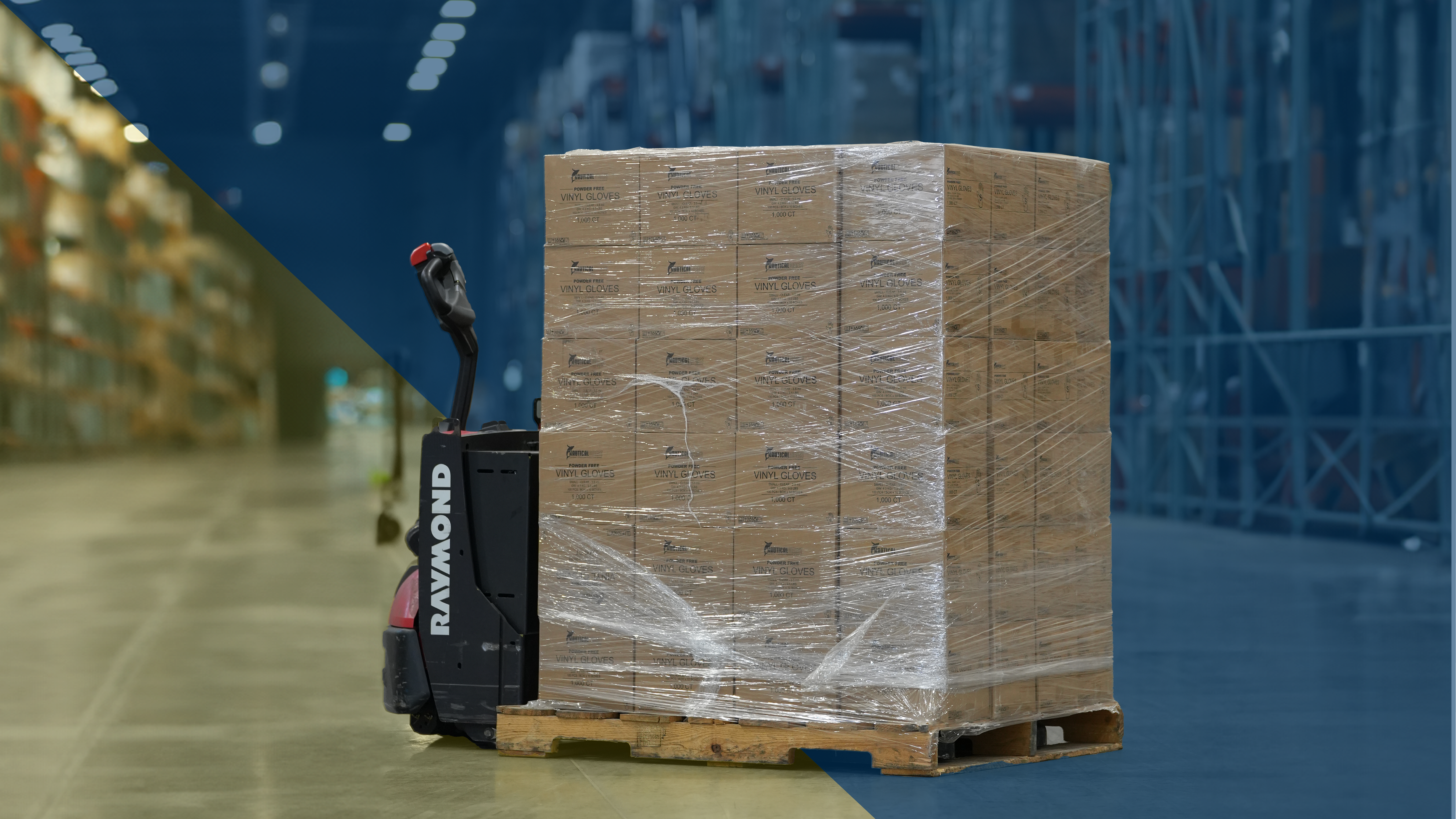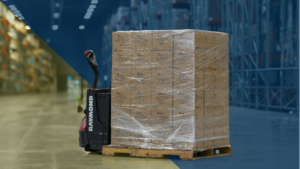The world of eCommerce is in a continuous state of iteration and improvement as businesses are constantly seeking innovative ways to meet the ever-growing expectations of their customers. As consumer demands evolve, requiring faster and more flexible delivery options, seamless brand experiences across online and physical stores, and personalized services, traditional fulfillment methods are increasingly becoming obsolete.
Hybrid order fulfillment has emerged to meet contemporary fulfillment demand, it combines multiple fulfillment strategies and blends traditional methods with modern innovations to create a more agile and efficient service set. As its name implies it is a hybrid model that leverages the strengths of various fulfillment methods, such as in-house processing, third-party logistics, and drop shipping, to fulfill orders via the most effective way.
What is Hybrid Order Fulfillment?
Hybrid order fulfillment merges traditional fulfillment methods (like in-house or outsourced fulfillment) with newer innovations (like order automation and real-time tracking), integrating approaches to create a flexible, efficient, and scalable system to better meet the demands of modern consumers. Here’s a closer look at how this model works and the key components involved.
Building on a Foundation of Multiple Fulfillment Strategies
At its core, hybrid order fulfillment builds off a foundation of several fulfillment methods meshed together into one cohesive system. This can include:
- In-House Fulfillment: Handling order processing and shipping internally within the company’s own warehouses. This method provides control over the entire fulfillment process and ensures quality and consistency.
- Third-Party Logistics (3PL): Partnering with external logistics providers to manage storage, packing, and shipping. 3PLs offer expertise, advanced technology, and the ability to scale operations quickly.
- Drop Shipping: Selling products that are shipped directly from the manufacturer or supplier to the customer. This method eliminates the need for inventory management and reduces overhead costs.
By integrating these strategies, businesses can optimize their operations, reduce costs, and improve delivery times, ensuring that customers receive their orders promptly and accurately.
Blending Traditional and Modern Methods
Layered on top of classic fulfillment techniques are modern technologies and innovations to bring enhanced efficiency and effectiveness. These more recent techniques, such as automation, real-time tracking, and advanced analytics, add significant value to the fulfillment side of a business.
- Automation: Utilizing automated systems for inventory management, order processing, and shipping to reduce human error and increase speed.
- Real-Time Tracking: Implementing tracking technologies that provide real-time updates on inventory levels and order statuses, ensuring transparency and accuracy.
- Advanced Analytics: Leveraging data analytics to forecast demand, optimize inventory, and improve decision-making processes.
This blend of old and new allows businesses to maintain reliability while adapting to remain competitive in the eCommerce industry.
Key Components and Processes Involved
Several key components and processes that work together to ensure smooth and efficient operations in a hybrid fulfillment model:
- Order Processing & Routing: Orders come in across multiple sales channels and are processed through an integrated system that determines the optimal fulfillment approach based on factors like location, inventory levels, and shipping costs.
- Real-time Inventory Management: Inventory is tracked across all warehouses and fulfillment centers to maintain accurate stock levels and reduce risks of stockouts and overstocking.
- Distributed Fulfillment: Multiple fulfillment centers, including in-house warehouses and 3PL partners, are strategically located to minimize shipping times and costs.
- Technology Integrations & Automations: Advanced software systems, such as Warehouse Management Systems (WMS) and Order Management Systems (OMS), are integrated to streamline operations, provide real-time data, and improve turnaround time across fulfillment methods.
- Shipping and Delivery Optimizations: Orders are packed and shipped using the most efficient and cost-effective method, whether through in-house shipping, 3PL partners, or drop shipping. Real-time tracking ensures customers are informed about their order status throughout the delivery process.
By combining these components and processes, hybrid order fulfillment offers a comprehensive and adaptable solution that meets the demands of modern eCommerce, providing businesses with the tools they need to succeed in a competitive market.
Benefits of Hybrid Order Fulfillment
Hybrid order fulfillment offers many advantages that enhance the operational efficiency and customer experience for eCommerce businesses. Here are some of the key benefits:
Flexibility and Scalability
One key benefit of hybrid order fulfillment is its flexibility and scalability, allowing businesses to easily adapt to changes in demand (whether a sudden spike during the holiday season or a long-term increase in order volume). This flexibility ensures that companies can scale their operations without compromising on efficiency or service quality. Hybrid models allow businesses to leverage in-house resources for regular operations while tapping into third-party logistics (3PL) and drop shipping partners to handle peak periods and expand to new markets seamlessly.
Improved Customer Satisfaction
Customer satisfaction is at the heart of any successful eCommerce business, and hybrid order fulfillment plays a crucial role in enhancing it. By offering multiple fulfillment options, businesses can provide faster and more reliable delivery services. Real-time inventory visibility and tracking keep customers informed about their order status. Fulfilling orders from multiple locations means that products can be shipped from the nearest warehouse, minimizing delivery times and improving the overall customer experience.
Cost Efficiency
Hybrid order fulfillment can lead to significant cost savings by optimizing various aspects of the fulfillment process. By leveraging multiple fulfillment types, a business can reduce its overhead costs associated with inventory storage, labor, and transportation. The flexibility to choose the most cost-effective shipping method for each order also helps in minimizing shipping expenses. The integration of advanced technologies and automation further streamlines operations, reducing manual errors and operational costs.
Enhanced Inventory Management
Effective inventory management is critical for maintaining optimal stock levels and meeting customer demands. Hybrid order fulfillment offers enhanced inventory management capabilities through real-time tracking and data analytics. Businesses can gain a comprehensive view of their inventory across multiple locations, ensuring accurate stock levels and preventing issues like stockouts and overstocking. This improved visibility allows for better demand forecasting, efficient replenishment processes, and strategic decision-making.
Reduced Shipping Times
Speed is a crucial factor in today’s competitive eCommerce landscape, and hybrid order fulfillment can significantly reduce shipping times by leveraging multiple fulfillment centers and shipping methods. This results in faster delivery while also reducing shipping costs. Integration comes into play here, too – automated order processing and real-time tracking bring further efficiencies and speed to the fulfillment process.
How Hybrid Order Fulfillment Works, From Start to Finish
Here’s a detailed explanation of how hybrid order fulfillment integrates fulfillment processes and takes advantage of technology to create a seamless, flexible, and efficient process.
1. Order Receipt and Processing
Order Reception:
- Orders are received from multiple sales channels, such as eCommerce websites, online marketplaces (e.g., Amazon, eBay), and physical retail stores.
- The Order Management System (OMS) consolidates all incoming orders into a single interface, providing a unified view for easy management.
Order Routing:
- The OMS evaluates each order based on predefined criteria such as customer location, product availability, shipping speed, and cost.
- The system determines the optimal fulfillment method for each order, whether it is in-house fulfillment, third-party logistics (3PL), or drop shipping.
2. Inventory Management
Real-Time Inventory Tracking:
- Inventory levels are monitored in real-time across all warehouses and fulfillment centers using the Warehouse Management System (WMS).
- The WMS ensures accurate stock information, preventing stockouts and overstocking.
Inventory Allocation:
- Based on real-time data, the system allocates inventory to the most appropriate fulfillment center.
- The WMS updates stock levels dynamically, ensuring efficient use of inventory.
3. Fulfillment Strategies
In-House Fulfillment:
- Orders designated for in-house fulfillment are processed within the company’s own warehouses.
- Warehouse staff picks, packs, and prepares orders for shipment, guided by the WMS.
Third-Party Logistics (3PL):
- Orders assigned to 3PL partners are transmitted to the external logistics provider.
- The 3PL partner manages storage, picking, packing, and shipping on behalf of the company.
Drop Shipping:
- For drop-shipped orders, the order details are sent directly to the manufacturer or supplier.
- The supplier ships the product directly to the customer, bypassing the need for the company to handle inventory or shipping.
4. Integration with Technology
Warehouse Management Systems (WMS):
- The WMS optimizes warehouse operations, from receiving and storing inventory to picking, packing, and shipping orders.
- It ensures efficient space utilization, accurate inventory tracking, and streamlined workflows.
Order Management Systems (OMS):
- The OMS integrates with various sales channels and fulfillment centers, managing orders from the point of sale to final delivery.
- It coordinates order routing, inventory allocation, and shipping, ensuring seamless order processing.
Real-Time Data Analytics:
- Advanced analytics provide insights into inventory levels, order status, and fulfillment performance.
- Businesses use this data to forecast demand, optimize inventory management, and improve decision-making processes.
5. Order Fulfillment and Shipping
Picking and Packing:
- For in-house fulfillment, the WMS guides warehouse staff through the picking and packing process.
- For 3PL or drop-shipped orders, the respective partners handle these tasks according to agreed standards.
Shipping:
- The order is shipped using the most efficient and cost-effective method, based on the customer’s location and delivery preferences.
- Shipping options may include standard, expedited, or same-day delivery, depending on the service levels offered.
Real-Time Tracking:
- Customers receive real-time updates on their order status, from processing to delivery.
- Tracking information is integrated with the OMS, providing customers with visibility into their order’s journey.
6. Post-Delivery Support
Customer Service:
- Customer service teams handle any post-delivery issues, such as returns, exchanges, or inquiries.
- The OMS provides customer service with detailed order information to resolve issues quickly and efficiently.
Feedback and Continuous Improvement:
- Customer feedback is collected and analyzed to identify areas for improvement.
- Continuous monitoring and optimization of the fulfillment process ensure that the system adapts to changing demands and maintains high service levels.
Use Cases and Examples of Hybrid Order Fulfillment
Hybrid order fulfillment is highly adaptable, catering to a wide range of business needs by integrating multiple fulfillment strategies. It can be widely applied across business cases, including companies with online and physical touchpoints, those dealing with seasonal and promotional demand spikes, and into new markets.
Retailers with Both Online and Physical Stores
Retailers operating both online and physical stores benefit greatly from hybrid order fulfillment by creating a seamless shopping experience across channels. This approach enables retailers to fulfill orders from the most appropriate location, whether it’s an in-house warehouse or a local store. For instance, if a customer orders a product online, the system can automatically decide to ship it from the nearest physical store to reduce shipping times and costs. This integration ensures that inventory is managed efficiently, orders are processed swiftly, and customers enjoy consistent service levels regardless of their shopping channel.
Seasonal and Promotional Demand Spikes
Businesses often experience significant fluctuations in demand during seasonal peaks or promotional events. Hybrid order fulfillment allows these businesses to effectively manage such spikes by leveraging various fulfillment methods. For example, during the holiday season, a company can use its in-house warehouses for regular orders while relying on third-party logistics (3PL) providers to handle the increased volume. Additionally, drop shipping can be utilized to offer a broader range of products without overburdening existing inventory. This flexible approach ensures that businesses can meet high demand without compromising service quality or operational efficiency.
Businesses Expanding to New Markets
As businesses look to expand into new geographic markets, hybrid order fulfillment provides the flexibility needed to scale operations effectively. For instance, a company entering an international market can partner with local 3PL providers to manage warehousing and shipping, avoiding the need for substantial investment in new facilities. By using a combination of local fulfillment centers and drop shipping, the business can offer competitive delivery times and costs while minimizing logistical complexities. This strategy allows for a smoother market entry and helps establish a strong presence in new regions.
Case Study: How “Gymshark” Benefitted from Hybrid Order Fulfillment
Background
- Company: Gymshark
- Industry: Fitness Apparel and Accessories
- Headquarters: Birmingham, UK
- Sales Channels: eCommerce Website, Amazon Marketplace, Physical Retail Pop-ups
Gymshark, a rapidly growing fitness apparel brand, has revolutionized its operations with a hybrid order fulfillment strategy. Founded in 2012, the company quickly gained popularity through social media marketing and influencer partnerships. As Gymshark expanded, it faced challenges managing its growing inventory, addressing seasonal demand spikes, and scaling its fulfillment operations globally.
Challenges
- Inventory Management:
- Gymshark’s initial fulfillment approach struggled to keep up with fluctuating demand, resulting in stockouts and excess inventory at various points in its supply chain.
- Handling Seasonal Demand:
- High-demand periods, such as Black Friday and new product launches, overwhelmed Gymshark’s in-house fulfillment capabilities, leading to delayed shipments and customer dissatisfaction.
- Global Expansion:
- Expanding into international markets introduced complexities related to shipping logistics, customs, and local warehousing needs, necessitating a flexible fulfillment solution.
Hybrid Order Fulfillment Implementation
To address these challenges, Gymshark adopted a hybrid order fulfillment strategy that combined multiple approaches:
- In-House Fulfillment:
- Gymshark retained in-house fulfillment for its core products and primary markets. This allowed the company to maintain tight control over inventory and fulfillment processes for its key product lines.
- Third-Party Logistics (3PL):
- For seasonal peaks and international orders, Gymshark partnered with 3PL providers. This included outsourcing warehousing and fulfillment for global markets, allowing the company to efficiently scale its operations without significant infrastructure investments.
- Drop Shipping:
- Gymshark utilized drop shipping for specific limited-edition products and collaborations. This method reduced inventory holding costs and allowed the company to offer exclusive items without the need for large-scale production or warehousing.
- Technology Integration:
- The integration of Warehouse Management Systems (WMS) and Order Management Systems (OMS) facilitated real-time inventory tracking, streamlined order processing, and improved fulfillment accuracy. Gymshark also used real-time data analytics to optimize inventory levels and forecast demand more effectively.
Results
- Enhanced Inventory Management:
- By using a hybrid model, Gymshark achieved a 30% reduction in stockouts and a 25% decrease in excess inventory. The WMS and OMS integration improved inventory accuracy and streamlined operations (Gymshark, 2022).
- Improved Handling of Seasonal Demand:
- The flexibility provided by 3PL partners helped Gymshark manage high-demand periods more effectively, resulting in a 40% improvement in order fulfillment speed during peak times (Retail Week, 2023).
- Successful Global Expansion:
- Partnering with 3PL providers facilitated Gymshark’s entry into international markets, reducing shipping costs by 35% and enhancing delivery speed by 20% in new regions (Supply Chain Digital, 2023).
- Increased Customer Satisfaction:
- The improvements in fulfillment accuracy and speed led to a 30% increase in customer satisfaction scores and a 25% rise in repeat purchases (Gymshark, 2022).
Conclusion
Gymshark’s implementation of a hybrid order fulfillment strategy significantly enhanced its operational efficiency and customer experience. By combining in-house fulfillment, third-party logistics, and drop shipping, the company successfully managed inventory, scaled operations during peak periods, and expanded into new markets. The use of advanced technology for inventory and order management further optimized the process, leading to improved customer satisfaction and business growth. This case study demonstrates how a hybrid approach can address complex fulfillment challenges and drive substantial improvements in performance.
Challenges and Considerations of Using Hybrid Order Fulfillment
While hybrid order fulfillment offers significant benefits, it also presents certain challenges and considerations that businesses need to address to ensure a successful implementation. Understanding these challenges can help companies better prepare for and manage their fulfillment strategies.
Complexity in Coordination
One of the primary challenges of hybrid order fulfillment is the complexity involved in coordinating multiple fulfillment methods. Managing in-house fulfillment alongside third-party logistics (3PL) providers and drop shipping requires meticulous planning and coordination. Businesses must ensure that inventory levels are accurately tracked across different channels and locations, and that orders are routed correctly based on various criteria such as location, shipping speed, and product availability. This complexity can lead to potential issues with order accuracy and fulfillment efficiency if not properly managed. Effective communication and integration between different fulfillment partners are essential to minimize errors and ensure a smooth operation.
Initial Setup Costs
Implementing a hybrid order fulfillment strategy can involve significant initial setup costs. These costs include investing in technology such as Warehouse Management Systems (WMS) and Order Management Systems (OMS), integrating these systems with existing operations, and establishing relationships with 3PL providers or suppliers for drop shipping. Additionally, businesses may need to invest in training staff and developing processes to manage the complexities of a hybrid system. While these upfront costs can be substantial, they are often offset by the long-term benefits of increased flexibility and efficiency in order fulfillment.
Dependence on Technology
Hybrid order fulfillment relies heavily on technology for managing inventory, processing orders, and ensuring accurate and timely deliveries. Dependence on technology means that any system outages or technical issues can significantly impact the fulfillment process. Businesses need to ensure that their technology infrastructure is robust, reliable, and capable of handling the demands of a hybrid fulfillment model. Regular maintenance, updates, and backups are crucial to mitigate the risks associated with technological failures. Additionally, investing in advanced data analytics can help businesses make informed decisions and optimize their fulfillment processes.
Ensuring Seamless Customer Experience
Providing a seamless customer experience is a critical consideration when using hybrid order fulfillment. Customers expect consistency in delivery speed, order accuracy, and overall service quality, regardless of the fulfillment method used. Businesses must ensure that all fulfillment channels—whether in-house, 3PL, or drop shipping—operate cohesively to meet these expectations. This includes offering reliable tracking information, managing returns efficiently, and maintaining high standards of customer service. To achieve this, companies need to integrate their fulfillment processes and communicate clearly with customers about delivery times, potential delays, and order status updates.
In summary, while hybrid order fulfillment offers flexibility and efficiency, it comes with challenges that need careful management. Companies must navigate the complexity of coordinating multiple fulfillment methods, invest in technology and initial setup, and ensure that they provide a consistent and high-quality customer experience. By addressing these challenges proactively, businesses can leverage the advantages of hybrid fulfillment and enhance their overall operational effectiveness.
Frequently Asked Questions
Is Hybrid Order Fulfillment Right For My Business?
Hybrid order fulfillment combines in-house and third-party logistics (3PL) solutions, offering scalability, cost efficiency, and flexibility. It’s ideal for businesses experiencing fluctuating demand, as it allows handling base orders internally while outsourcing peak volumes. This approach leverages the expertise and resources of 3PL providers, such as advanced technology and logistics networks, to enhance customer experience and manage risks. It’s important to evaluate costs, ensure technology integration, and plan for scalability when considering this model.
What Is Hybrid Order Fulfillment In Ecommerce?
Hybrid order fulfillment in eCommerce is a strategy that combines in-house fulfillment with third-party logistics (3PL) services. This approach allows businesses to manage a portion of their inventory and shipping processes internally while outsourcing the rest to 3PL providers. It offers flexibility, scalability, and cost efficiency, enabling companies to handle varying order volumes, optimize delivery times, and leverage external expertise and infrastructure for logistics and warehousing.
Does Hybrid Fulfillment Require A 3PL Company?
Hybrid fulfillment typically involves using a 3PL company to manage a portion of the logistics and warehousing functions. While the business handles some aspects of fulfillment in-house, partnering with a 3PL allows access to additional resources, expertise, and scalability. However, in some cases, businesses might use multiple internal facilities or different in-house and external logistics services, but the classic hybrid model generally includes a 3PL component.




